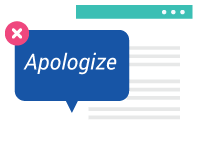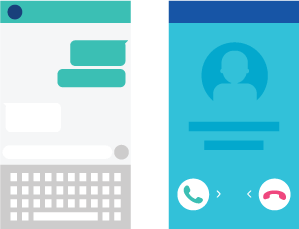Sales Follow-Up Email Strategy
Lesson 6
Eliminating Desperation From Your Follow-Ups
with Nate Wright of Inbox Attack
Nate Wright is an email marketing guru who has trained business leaders on fundamental email writing skills full-time for nine years. His company, Inbox Attack, is like a fitness boot camp for email copywriting, teaching clients how to craft compelling, effective emails for starting conversations, how to create pitches, and how to close deals.
Before starting Inbox Attack, Nate worked as a headhunter. While in that field, he learned and mastered the email craft of getting people’s attention, connecting successful individuals, and closing deals.
Here’s Nate’s advice:
[lyte id=”si2Th-Uk5r0″ /]
Remove Desperation [01:05]
Ditch the desperation if you want to get any engagement on your follow-up emails.
“You need to reread, and reread, and reread your follow-up emails to remove desperation. Desperation will never get you anywhere.”

Remove phrases like:
- “If it’s not too much trouble”
- “I apologize in advance for bothering you”
If the prospect ignored your email in the first place, then desperation isn’t going to win you any points with them. Plus, if you truly believe your product is that good, then don’t forget, you’re doing them a favor. Give them the chance to solve a problem or level something up their life.
Make It About Them [02:18]

Read through your emails and remove as many “I” statements as possible.
“Focus on how you can make their life a little bit better.”
It’s crucial to add value in every single engagement, even if it’s as simple as teaching them something or making them laugh. Too many salespeople focus on themselves, their credentials, and selling their product’s features. Instead, you should be benefit-driven and focus on what value you or your product can bring to the prospective client.
Be Adaptable [03:35]

I still use the phone, but I’m not a fan of text messages and instant messaging of any kind. That being said, when enough clients kept asking me to text or WhatsApp them, I decided I had to change my ways.
“If they tell you how best to communicate with them, then that’s the first step in them telling you how to sell to them.”
Email is still the go-to form of communication, but it doesn’t have to be the final form. Phone calls, texting, and social messaging apps are incredibly viable channels and often undervalued these days, which makes them ripe for standing out.
Show You’re Human [05:42]

As a cold email expert, I’m always fascinated by masterful attempts to sell me or get my attention.
“I collect the best cold emails like kids collect baseball cards.”
The best automated follow-up email that I ever received said, “Hey Nate, I’m so sorry. I forgot to give my cell phone number in that last email” – which worked because it held back a little value that the sender could highlight on the follow-up. It also had the added bonus of showing that the sender is human and makes easily-forgivable mistakes.
Make Them Look Good [07:49]

Instead of sending another desperate follow-up attempt like, “Hey, did you get my last email?” try thinking outside the box and providing even more value. The other best follow-up email I received was someone on the second attempt offering to introduce me to someone in my industry:
“Do you know so-and-so? I’d be willing to do a warm intro.”
Helping people achieve their goals by introducing them to key players can be a game – changing approach to getting engagement with follow-up emails.